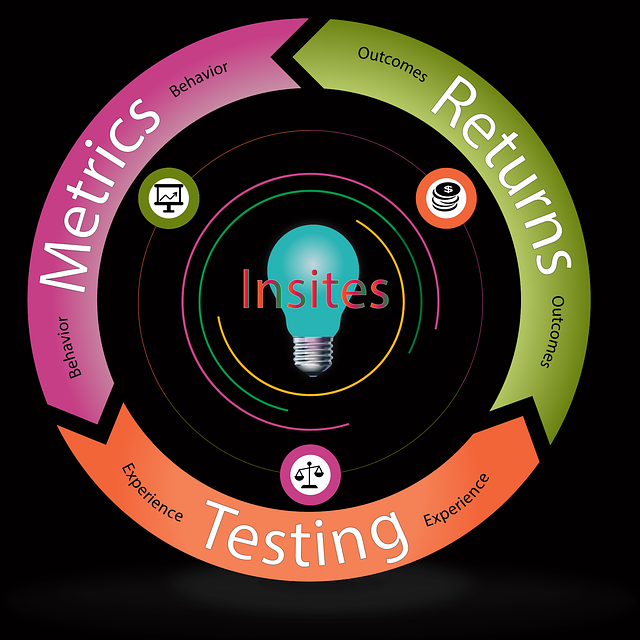White-Hat SEO focuses on ethical practices to boost search rankings by prioritizing quality content, enhanced user experience, and robust technical optimization. Keyword research using tools like Google Keyword Planner is vital for identifying high-volume, low-competition keywords that resonate with the target audience. On-page optimization, including strategic content crafting and technical enhancements, aligns with search engine algorithms for higher rankings, increased click-through rates, and reduced bounce rates. High-quality content emphasizes informativeness, entertainment, thorough research, originality, and offering solutions, while internal linking strategies interconnect relevant pages for better user experience and indexing by search engines. External resources are strategically incorporated for added credibility, and user-generated content (UGC) boosts organic traffic and engagement. Regularly updating content maintains rankings, and analytics tools like Google Analytics measure success by tracking key metrics to optimize content and refine strategies based on data insights.
In the digital landscape, content creation isn’t just about attracting views; it’s about strategic, ethical optimization through white-hat SEO techniques. This guide navigates the core principles of white-hat SEO, providing actionable insights for content creators. From understanding keyword research for targeted content to leveraging internal linking and measuring success with analytics, these strategies ensure your digital tapestry resonates with search engines and audiences alike.
Understanding White-Hat SEO Principles

White-Hat SEO revolves around ethical and sustainable practices designed to improve search engine rankings while adhering to Google’s guidelines. It emphasizes quality content, user experience, and robust technical optimization, ensuring that websites are valuable resources for users and search engines alike. By employing these principles, creators can avoid risky strategies that may lead to penalties and focus on long-term success.
This approach incorporates various White-Hat SEO Techniques such as keyword research to understand audience intent, creating in-depth and unique content that addresses information needs, optimizing meta tags and headers for better visibility, and ensuring mobile-friendliness and fast loading speeds. These techniques not only enhance search engine visibility but also foster a positive user experience, driving engagement and reducing bounce rates.
Keyword Research for Effective Content Creation

Keyword research is a cornerstone of successful content creation for White-Hat SEO techniques. It involves understanding your target audience and their search behaviors to create content that resonates with them and ranks well in search engines. By utilizing tools like Google Keyword Planner, SEMrush, or Ahrefs, you can identify relevant keywords with high search volumes and low competition. These insights allow content creators to tailor their topics, headings, and body text to align perfectly with user queries, thereby enhancing the likelihood of ranking higher on search engine results pages (SERPs).
Effective keyword research also involves analyzing intent behind searches. Understanding whether users seek informational, navigational, or commercial content helps in crafting more relevant and valuable pieces. This strategic approach ensures that your content not only attracts organic traffic but also provides a positive user experience, which is essential for White-Hat SEO practices.
Optimizing On-Page Elements

When implementing White-Hat SEO techniques, optimizing on-page elements is a cornerstone strategy. This involves carefully crafting and structuring your content to not only resonate with readers but also align perfectly with search engine algorithms. Keywords play a vital role here; strategically placing them within headings, meta descriptions, and body text ensures relevance and improves search visibility. Remember, the goal is to provide value while adhering to best practices, making your content appealing to both users and search engines.
Effective on-page optimization also extends to enhancing technical aspects. This includes ensuring fast loading times, optimizing images for better accessibility, and creating a seamless user experience across all devices. These White-Hat SEO techniques not only boost your page’s ranking but also contribute to higher click-through rates and reduced bounce rates, indicating improved engagement and search engine satisfaction.
Crafting High-Quality, Engaging Content

Creating high-quality content is a cornerstone of successful White-Hat SEO strategies. It involves going beyond mere keyword stuffing and focusing on delivering value to your audience. Engaging content should be informative, entertaining, or both, addressing user intent while aligning with search engine guidelines. Quality isn’t just about length; it’s about depth of research, originality, and a clear focus on providing solutions rather than merely repeating information.
To craft compelling content, start by understanding your target audience and their pain points. Conduct thorough keyword research using White-Hat SEO techniques like analyzing competitor content, exploring search trends, and utilizing relevant tools to identify high-volume, low-competition keywords. Once you’ve identified these keywords, integrate them naturally into your content, ensuring readability and relevance remain paramount.
Utilization of Internal Linking Strategies

Internal linking strategies are a powerful tool within the arsenal of White-Hat SEO techniques. By interconnecting relevant pages within your website, you enhance user experience and allow search engines to better understand your content’s context and hierarchy. This method enables users to navigate seamlessly through related topics, encouraging longer sessions and lower bounce rates—key factors that positively impact SEO rankings.
When implementing internal linking, focus on creating a logical structure. Link to supporting pages within an article, or reference related blog posts to provide a more comprehensive exploration of the topic. Ensure each link is contextually relevant to maintain a natural flow. This not only assists search engine crawlers in indexing your site effectively but also positions your content as authoritative and valuable to both users and search engines alike.
Leveraging External Resources Responsibly

In the realm of White-Hat SEO Techniques, leveraging external resources responsibly is a strategic move to enhance content credibility and search engine rankings. This involves curating and incorporating information from reputable sources, ensuring it adds value to your target audience. By citing authoritative websites, academic research, or industry-leading publications, you not only support your content’s accuracy but also signal to search engines that your material is trustworthy and well-researched.
Responsible resource leveraging includes providing proper attribution, adhering to copyright guidelines, and offering a unique perspective on the aggregated information. This approach fosters a positive user experience by delivering high-quality, original content while benefitting from external insights. It’s a delicate balance where you extract valuable data without compromising ethical standards, ultimately contributing to a robust online ecosystem that respects intellectual property and promotes reliable White-Hat SEO practices.
The Power of User-Generated Content

In today’s digital age, user-generated content (UGC) has emerged as a powerful tool for brands and content creators looking to boost their White-Hat SEO strategies. This authentic and diverse content created by real users holds immense value in building trust and credibility with search engines. When incorporated into a well-planned SEO technique, UGC can drive organic traffic, increase brand visibility, and enhance the overall user experience on a website.
Brands can encourage user engagement and contribution through various means, such as contests, reviews, social media campaigns, and product sharing. By fostering a community of active participants, businesses can gather valuable content that is genuinely representative of their products or services. This type of content is often more engaging and trustworthy than traditional marketing materials, which can significantly impact search engine rankings. Search engines like Google favor websites with active user interactions, and UGC provides just that, making it an integral part of any successful White-Hat SEO campaign.
Regularly Updating and Refreshing Content

In the dynamic landscape of online visibility, one of the cornerstone White-Hat SEO techniques is consistently updating and refreshing content. Search engines prioritize fresh, relevant information, making timely revisions crucial for maintaining and enhancing search rankings. Regular updates signal to algorithms that a site remains active and engaged with its audience, fostering trust and credibility.
This involves not just correcting outdated information but also expanding upon existing content, adding new insights, and incorporating the latest trends and keywords. By doing so, content becomes more valuable to readers and more appealing to search engines, contributing significantly to improved search engine optimization outcomes.
Measuring Success with Analytical Tools

Measuring success is a vital component of any content creation strategy, and for White-Hat SEO techniques, analytical tools are indispensable. These tools provide valuable insights into user behavior, helping content creators understand how their audience engages with the material. By tracking key metrics such as organic traffic, bounce rates, and time spent on page, creators can assess the effectiveness of their strategies and make data-driven adjustments.
Google Analytics is a popular choice for gauging the success of White-Hat SEO efforts. It offers detailed reports on search engine rankings, keyword performance, and user demographics, allowing content creators to optimize their content for better visibility and engagement. Through these tools, they can identify high-performing content, understand audience preferences, and continuously refine their approach to meet the evolving needs of their target market.
